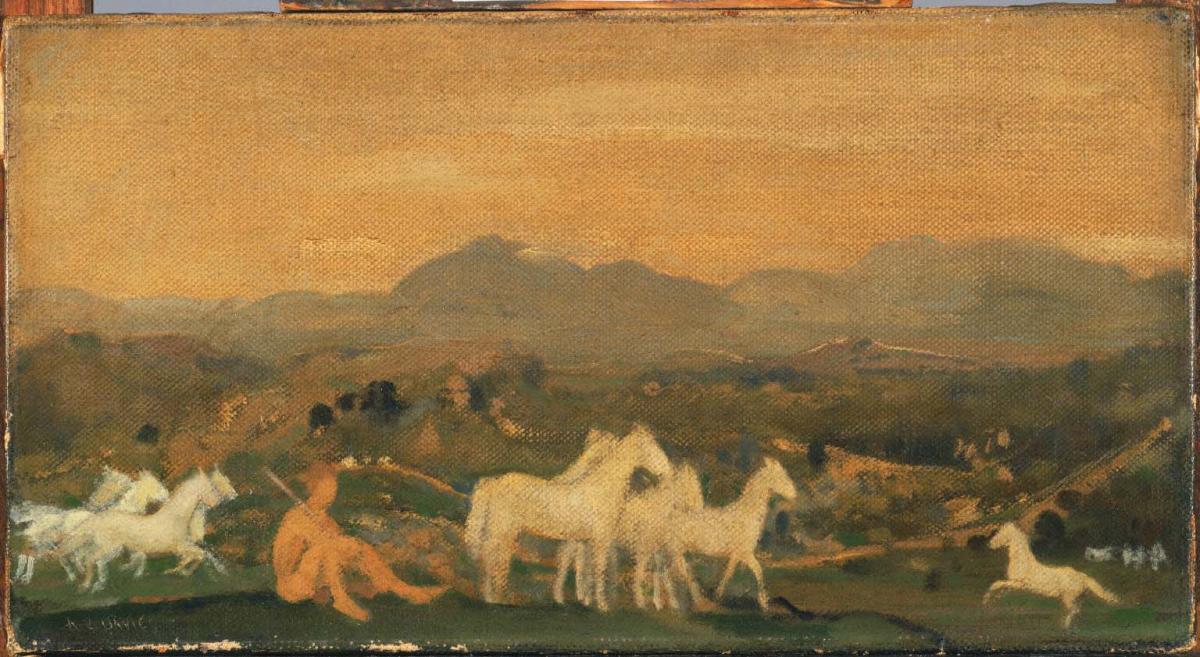Horses of Attica
Arthur B. Davies ( after 1910 )

Horses of Attica, was probably created after 1910, the year Davies made his first trip to Greece and southern Italy. Visiting the sites of classical antiquity was especially rewarding for Davies and, as evidenced in this work, the trip expanded the range of his landscape painting and his perception of the antique past.
Though the painting is small in scale, it has the wide horizontal format and sweeping view preferred by Davies for his landscapes. A pastoral scene is depicted in rich, delicate pastel shades with loosely worked-in details and a dry, scrubbed-looking surface. A naked man sits on the ground holding a staff and watching his herd of horses frolic against a backdrop of the Attic hills near Athens. To Duncan Phillips, the closely grouped, prancing poses of the horses suggested the sculptural reliefs of the Parthenon. He also saw the continuation of the long and revered pastoral landscape tradition whose roots went back to Poussin and, centuries earlier, to Virgilian Rome and Theocritan Athens: “First Poussin, then Puvis created true visions of antiquity in which the excited heroes and horses of the Parthenon frieze gallop gaily across a beach of the deep blue Mediterranean, but perhaps the most original use of the oft-recurring vision has been made by Davies in the small canvas called ‘The White Horses of Attica’.”
The importance of Davies’s trip to Greece and Italy in reinforcing his interest in ancient myth and archaic cultures is clearly reflected in a letter he sent to his dealer, William Macbeth, in 1910 from Naples: “[The frescoes of Pompeii] are perfectly thrilling—the finest things I have ever seen – as fresh as if painted yesterday. I might say thankfully that I have been quite on the level and do feel capable of far greater expression because of my own ‘entente cordiale’ with Greek painters – so archaic – so great – so modern….I cannot tell you how much these things mean to me.” In Horses of Attica, Davies recalled antique art and motifs while evoking the universal pastoral theme of man in harmony with nature.